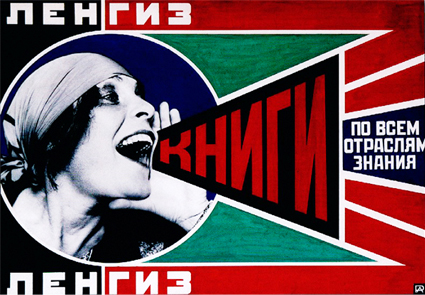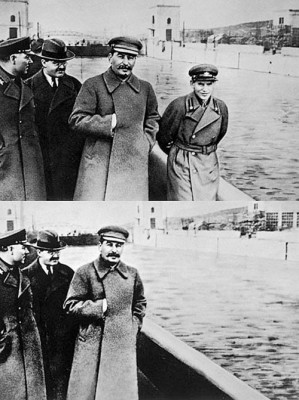Background
Since 879, Russia was ruled by the Romanov family, a long lasting dynasty. For hundreds of years Russia was a agricultural feudal system and power lied with the landowners and the masses, who were suppresses, peasants who were tied to the land.

Over the course of the 19th and early 20th Century, Europe underwent an Industrial Revolution – a dramatic period of political and social change whereby the old agricultural systems which existed for thousands of years were replaced by the creation and expansion of industrial societies, with large numbers of peasants moving to the cities and becoming ‘workers’ in factories.
These social changes put pressure on the old autocratic systems of monarchy which existed throughout Europe. Many Governments – Russia included – were extremely reluctant to introduce reform to meet these growing demands. Growing dissent among the workers led to a rise of a political ideology known as Marxism, which advocated the ‘workers rise up against the proletariat’ and establish a new system of Governing known as Socialism (Communism), through which means of production was distributed evenly across all members of society.
In October 1917, Vladmir Lenin and the Bolshevik Party organised an armed uprising against the newly formed Russian Provisional Government (after the Tsar’s abdication in Feb. 1917), leading to the creation of the world’s first Communist state.

Lenin turned Russia into a totalitarian state, which meant that the government had complete control of every aspect of life – and individual rights and freedoms suppressed brutality by the Bolshevik Secret Police. One of the key characteristics of a totalitarian state is the belief that the masses should embrace the ideology and actively love the regime.
An effective way Lenin, and later Stalin, ensured this was through the introduction of State Propaganda.
State Propaganda in Russia was intended to brainwash and manipulate the masses into supporting the regime. Both Lenin and Stalin used propaganda to make themselves appear in to be brave, honourable, loving and courageous. As a result the masses were subdued into total and absolute admiration for their dictator. In Stalin’s case in particular, propaganda was used to make the masses both love him whilst simultaneously fear his enormous power.
PROPAGANDA POSTERS





STALIN – PROPAGANDA AND THE CULT OF PERSONALITY
BACKGROUND
| 1929 | Founding of ‘All-Union Co-operative of Workers in Representational Arts |
| 1932 | Decree on the Reformation of Literary-Artistic Organisations |
| 1934 | First All-Union of Soviet Writers – adoption of ‘Social Realism’ |
| 1935 | General Plan for Reconstruction of Moscow |
| 1936 | Committee for Art Affairs (KPDI) established |
| 1938 | Publication of ‘The Short Course of the History of the All-Union Communist Party’ and ‘The Short Biography of Stalin, |
RUSSIAN ART AND CULTURE BEFORE STALIN
In the early days of Communism, the Soviet authorities were prepared to tolerate a great deal of diversity in revolutionary art and culture. Art during this period (1920-30s) was revolution in many senses, deliberately experimental and different from traditional art forms
- Kasimir Malevich = abstract paintings such as ‘Black Square’

- Leon Theremin invented world’s first electronic musical instrument – the theremin

- Filmaker Dziga Vertov, Kino Pravda; slow-motion, freeze frames and playbacks – films with no sets actors or plot
Thiis period also Celebrated modern industrial technology – abstract geometrical shapes that resembled shapes in factory buildings
- Composer Alexander Mosolov – ‘The Iron Factory’ and ‘Steel’
… and promoted revolutionary heroics
- Sergei Einstein = trilogy of films celebrating the struggle of the workers against the Tsar
RECONSTRUCTING THE ARTS
1930 – Stalin expresses his discontent with Soviet Art. In ‘The Bolshevik’, he argues that revolutionary art should ‘express government opinion’ rather than ‘individual creativity’
Art meant nothing to the average peasant or worker – abstract shapes, surrealist films and experimental music were incompatible with the Soviet masses
REORGANISING SOVIET LITERATURE – SOCIALIST REALISM: ‘ART FOR THE WORKERS’
Art was re-organised in April 1932, following the ‘Decree of the Reformation of Literary-Artistic Organisations’. This decree established ‘Union of Soviet Writers’ which defined the style appropriate for Russian authors
Ivan Kulik of ‘Ukrainian Writers’ Union’ argued all Soviets writers who supported the revolution should adopt ‘Socialist Realism’. In 1934 – ‘All-Union Congress of Soviet Writers’ officially adopted ‘Socialist Realism’
‘SOCIALIST REALISM’
Refers to art which provides a ‘true reflection of reality’ whilst ‘participating in the building of socialism’
Based into three concepts …. Partynost (party spirit), Narodnost (national spirt) and Ideinost (new thinking)
Primary aim of Government = ‘educating the workers in the spirit of communism’ to deliver ‘art for the workers’….. using art to sell Communist ideology
Return to traditionalism was part of Stalin’s ‘Great Retreat’, a return to traditional values based on modesty and morality
ART FOR THE WORKERS

1929 – ‘ALL-Union Co-operative of Workers in Representational Arts’ established – worked in very similar way to the ‘Five Year Plans’ …. Members were set targets to complete a certain amount of pieces of work on a subject matter they were told to complete
1930 …. 200 artists were sent to collective farms and construction sites with the task of recording the ‘heroic work’ they witnessed

1936 …. ‘Committee for Art Affairs (KPDI) …. KPDI, under Yezhov, began to purge Soviet artists
Soviet Government and supports saw this period of a ‘creative atmosphere of enthusiasm’, however in reality artists were controlled, suppressed, and like industrial workers/managers, force to reach unrealistic ‘targets’

INSPIRATIONAL ART
‘Socialist Realism’ = designed to inspire the workers
Artistic required to ‘reflect in art the spirit and experiences of life out in the major sites of socialist industry’
Sculptures celebrating achievements of ‘Five Year Plans’ such as Dnieper Power Station and 70 metre long model of Dnieper Damn
Propaganda posters …. Gustavs Klucis commissioned to produce poster – ‘In the Storm of the Third Year of the Five-Year Plan’, portraying heroic workers mining
Novels …. Valentine Kataev = ‘Forward, Oh Time!’
ACHIEVEMENTS OF COLLECTIVISATION
Russian Artists attempted to glorify the achievements of collectivisation
Anti-Kulak Propaganda …. Samuil Adlivankin’s painting ‘Voting to Expel the Kulak from the Collective Farm’
Joy of Collectivisation … Aleksei Vasilev’s painting ‘They are Writing About Us in Pravda’ – depicting happy peasants eating a plentiful meal

Dziga Vertov’s film ‘Three Songs about Lenin’ described the way in which new technology had created farms in the desert
‘Socialist Realism’ continuously expressed they people enjoyed and benefitted greatly from collective farms despite the suffering and hardship and famine the policy resulted in
CITIES FIT FOR HEROES
Urban workers = heroes of Socialist Russia
Stalin commissioned the ‘Union of Soviet Architects’ to redesign Russia’s cities …. Cities designed to ‘demonstrate that there is no country in the world as blessed as the Soviet Union’
Stalin wanted to reconstruct the architectural design of Moscow to create ‘a truly socialist city’
Plan followed Five Year Plans by trying to transform the city in an extremely short period of time
Moscow Metro Station – underground station designed like a palace, decorated with grand columns …
Landmark that Russia could show off to the rest of the world
Achievement the workers could be proud of – triumph for Socialism
Distraction from poverty and suffering in the city
Connecting architectural advancement to convey the successes of Stalin’s policies

ART FOR THE LEADERS
Part of totalitarian system = demands complete and absolute respect for dictator
Various forms of art designed to establish the ‘Cult of Stalin’ – making up myths, exaggerations and re-writing history to present to view of Stalin as a revolutionary and ideological genius and the father of the nation

THE ‘MYTH OF TWO LEADERS’
By the late 1930s, Soviet history = extensively re-written
Stalin created the ‘Myth of Two Leaders’ – myth putting himself alongside Lenin as a hero of the revolution
Greatly emphasised Stalin’s role in the early days of Communist rule, at the expense of many important figures of the revolution, including Trotsky
Propaganda created, history re-written and photos manipulated to fuel the idea that Stalin was Lenin’s closest friend and ally and thus his natural successor – evidence in Lenin’s Testament very much counters this idea

REMAKING THE PAST
1938, two ‘historical’ novels = central to creating and developing the ‘Myth of two Leaders’ – Erasing Trotsky completely from history and emphasised/fabricated Stalin as the most vital and significant contributor to the Communist Party …..
- ‘The Short of the History of the All-Union Communist Party’
- ‘The Short Biography of Stalin’
History was written and made up to fit around ‘The Cult of Stalin’
Novel’s supported newly formulated history …. Maria Krickova’s ‘The Tale of Lenin’, telling the story of Lenin’s death … Lenin is the ‘sun’ and Stalin is the ‘light’ that overcomes the ‘darkness’ which is Trotsky
Various paintings constructed fictional historical situations from 1917-24 to show Stalin always by Lenin’s side
Photographs altered, replacing Stalin’s rival and ‘old Bolsheviks’ with Stalin and his supporters

Nature of the Purges meant art had to be constantly changed – after former NKDV leader Yogada’s arrest for example, Dmitiri’s painting of ‘Stalin, Kirov and Yogada at the White Sea Canal’ had to be re-printed

‘THE CULT OF PERSONALITY’
1930s and 40s there were two ‘Cults of Personality’ – Lenin and Stalin; Lenin = teacher + Stalin = Lenin’s star and favourite pupil
1930s, Lenin Cult had a god-like hysteria; Dziga Vertov’s ‘Three Songs about Lenin’ – Lenin literally seen as a ‘ray of truth’ who ‘brought life to the deserts’

Building of Lenin’s mausoleum – Lenin wish was to be buried next to his mother but Stalin had his body embalmed and put on public display – immortalised in a god-like way ….. Mausoleum = effectively a Communist shrine met by masses of Lenin’s ‘followers’
‘Lenin Cult’ = crucial to totalitarian regime – powerful new symbols and rituals which replaced Christianity and allowed Russian citizens to form an emotional bod with the regime
Mid-1930s – Soviet artists and journalists generated a ‘Cult of Stalin’
Implied Stalin was Lenin’s naturally, divine successor and in many ways the embodiment of Lenin’s immortal revolutionary spirit
Some artists even implied that Stalin was the ghost of Lenin: ‘Long Live the Stalinist Order of Heroes and Stakanovites’ in which Stalin stands in front of a ghostly apparition of Lenin

‘Pravda’ praised Stalin’s ‘divine’ wisdom on a daily basis
Birth of a new ideology – ‘Marxism-Leninism-Stalin’: linking/connecting Stalin to Marx and Lenin, the legendary figures of the revolution
Stalin’s birthday becomes a national celebration – organised parades of marching troops, happy children and workers
Purpose of Cult = allow ordinary citizens to identify with the regime – discontentment with local conditions and economic hardship blamed on regional leaders and general ‘sabateurs’ whilst good things in life were associated directly with Stalin
1940s ….. ‘Cult of Stalin’ had progressed significantly
1941-45 = stressed his role of war leader …. Proganda posters, news reports and propaganda films showing Stalin and the ‘Red Army’ as a fierce force who resited the evil force of Nazi
Post WWIII – Stalin presented as a world leader
Soviet media presented Stalin as the hero who ‘liberated’ Eastern Europe from Nazi Control…. Eastern European nations taught to respect Stalin and encouraged to embrace Communist ideology + a union with the USSR
1950s – Stalin the intellectual: Wanted to be viewed as a master theorist and genius of communism …published ‘Marxism and Problems of Linguistics’ …article appeared in 1950 and was praised in the Soviet Press, described as an intellectual breakthrough

THE ‘CULT OF IMPERSONALITY’
Stalin’s biographer, Robert Service, has suggested that the Stalin cult is best understood as a ‘cult of impersonality’
In spite of the Russian people being taught to worship and respect Stalin in an obsessional, ‘god-like’ manner …… very little in fact was revealed about his history and character
Kept his personal life extremely private …..
Pre-1936 = no mention in the official press of Stalin’s children or family life
Stalin actively discouraged the publication of his early speeches and any attempts to write officials biographies
Rather than focusing on Stalin’s personality, the cult concentrated on the glamorous/appealing side of the Soviet regime ….
General view of Stalin as a mysterious, brilliant embodiment of socialism rather than any insight into Stalin’s life – focused of Stalin’s professional life and achievements rather than Stalin as an individual – he was in many ways a symbol of the regime rather than a person himself
Stalin was a complex and unstable character driven by hatred and paranoia …. This had to be disguised and kept from the public
CONCLUSION
Stalin’s regime = built on fear but not fear alone
During the famine, terror + hardships of Five Year Plan, Soviet Art/Propaganda offered the people a vision of a new society designed to inspire them and to continue the struggle to build socialism
Leadership cult gave the impersonal nature of the Soviet bureaucracy a human face, and created a point of emotional contact between the regime and the people
Art = allowed the people to escape the fustrations of everyday life …. Escapism which tied them to the ideals of the regime
‘Socialist Realism’ = very much a form of Social control.



